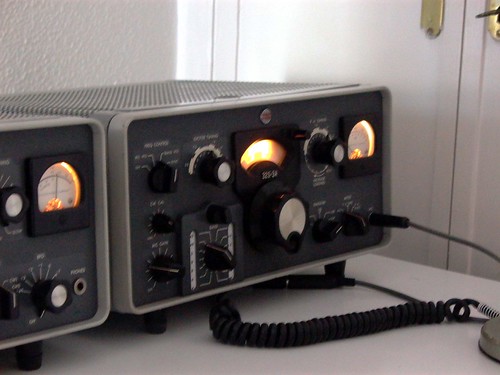
Radio communication is vital in todays aviation world.
An increase in air traffic - coupled with pressures in schedules and increased expectations from airline passengers - has resulted in more planes moving around the sky at any one time.
This has manifested itself in an increased workload on air traffic controllers. This was something that was pointed out to me on my recent trip to Farnborough's Air traffic control facilities.
What was pointed out again and again is the need for pilots to be in contact with controllers and for them to have good communications skills.
Here's a challenge for you. Take a small airband scanner to your local airport and tune in to the tower frequency. Listen to what is being said and then see how many exchanges completely follow the standard comms pattern defined by the CAA. For example, the use of pleasantries is discouraged and all altitude readings need to have an altimeter pressure setting read back with them. (i.e. "... level at 3500ft, 1012").
Now change frequency and listen to the local LARS or zone controller. When a new aircraft comes on frequency and is told to "pass your message", listen how many do it right.
The correct sequence is:
- Call-sign
- Aircraft type,
- Point of departure and destination,
- Altitude with altimeter setting,
- Intentions
- Request
Todays quick tip then is "Learn the expected items to pass on a radio contact (along with what needs to be read back to the controller)"
It makes things easier for everyone AND ensures everyone has all the information needed for a safer journey
photo courtesy of Nite_Owl